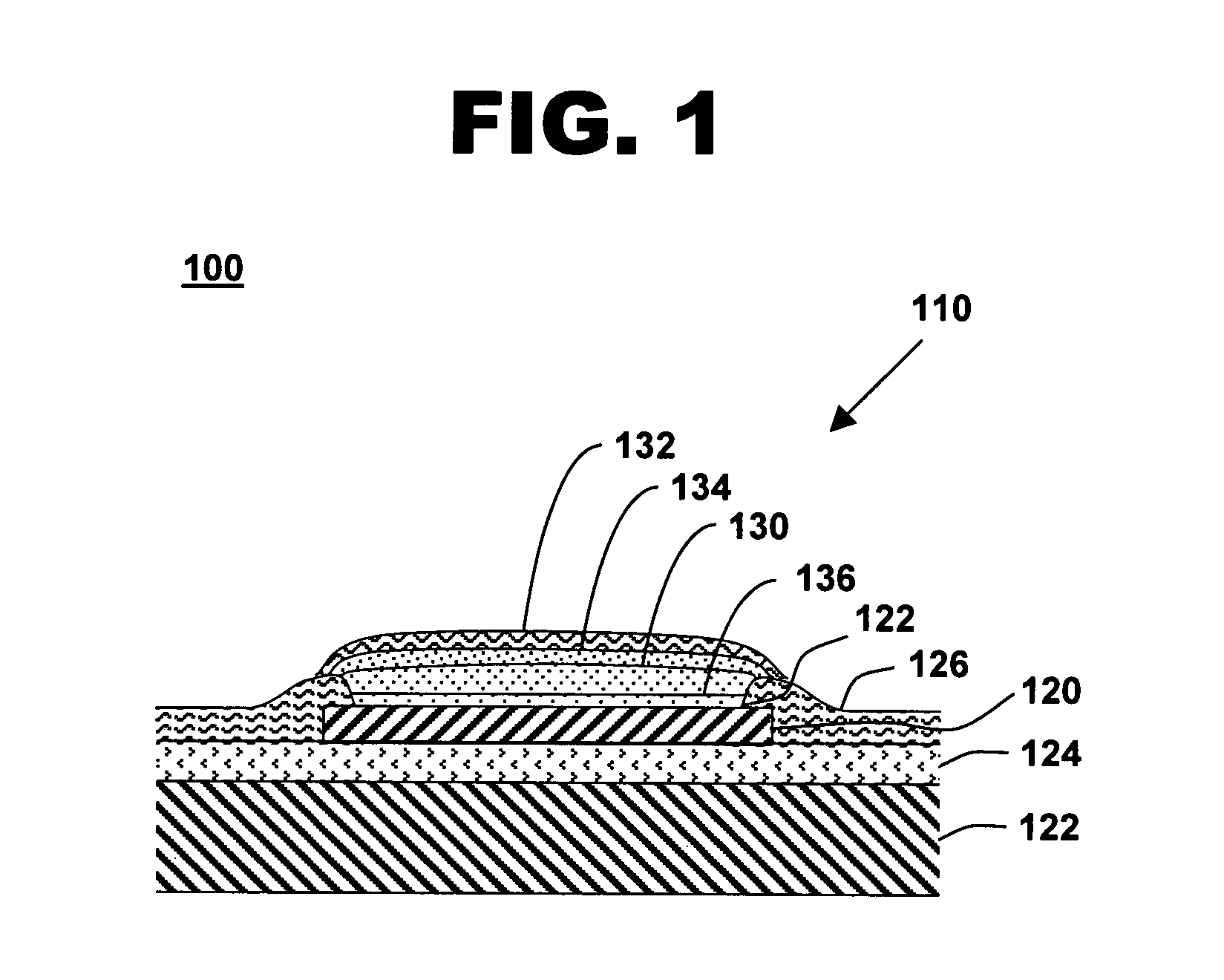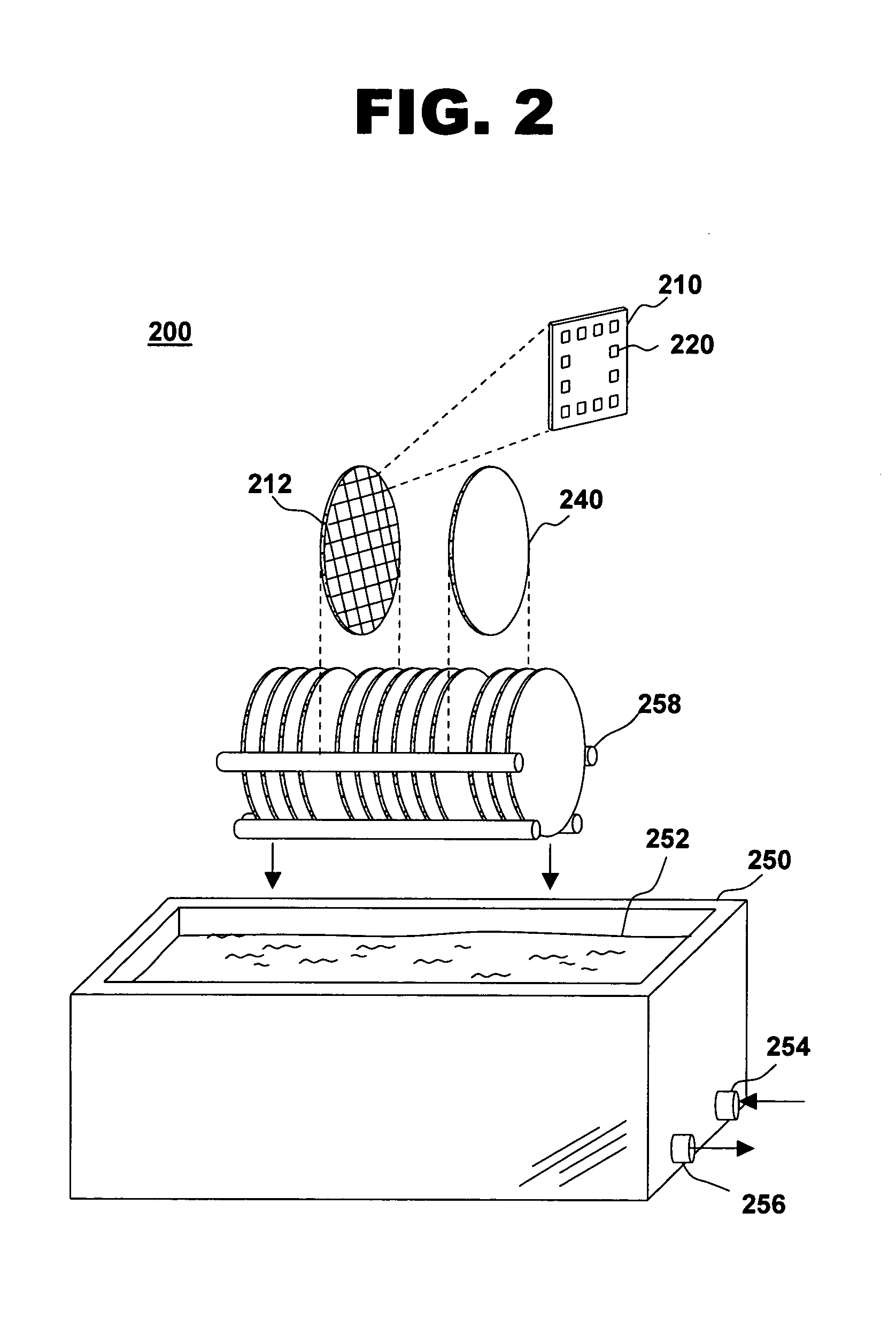Activation plate for electroless and immersion plating of integrated circuits
a technology of active plate and integrated circuit, which is applied in the direction of metallic material coating process, surface reaction electrolytic coating, solid-state device, etc., can solve the problems of deterioration of the pad, performance degradation and product failure, and easy corrosion of the aluminum bond pad on the integrated circuit under standard environmental test conditions
- Summary
- Abstract
- Description
- Claims
- Application Information
AI Technical Summary
Problems solved by technology
Method used
Image
Examples
Embodiment Construction
[0023]FIG. 1 shows a cross-sectional cutaway view of a plated bond pad on an integrated circuit, in accordance with one embodiment of the present invention at 100. Multiple bond pads 120 are typically located on the surface of an integrated circuit 110. The bond pads provide for electrical connections such as external power supplies, ground lines, input signals, output signals, data lines, address lines, other integrated circuits, and external electronic components. Integrated circuit 110 includes a plurality of bond pads 120. Integrated circuit 110 with the plurality of bond pads 120 may be contained, for example, on an undiced semiconductor wafer or on an individual semiconductor die.
[0024] Bond pad 120 is electrically isolated from a semiconductor substrate 122 such as a silicon substrate by one or more insulating layers 124. Insulating layer 124 may comprise, for example, a layer of silicon dioxide or silicon nitride. A passivation layer 126 typically covers the majority of the...
PUM
| Property | Measurement | Unit |
|---|---|---|
| distance | aaaaa | aaaaa |
| distance | aaaaa | aaaaa |
| thickness | aaaaa | aaaaa |
Abstract
Description
Claims
Application Information
 Login to View More
Login to View More - R&D
- Intellectual Property
- Life Sciences
- Materials
- Tech Scout
- Unparalleled Data Quality
- Higher Quality Content
- 60% Fewer Hallucinations
Browse by: Latest US Patents, China's latest patents, Technical Efficacy Thesaurus, Application Domain, Technology Topic, Popular Technical Reports.
© 2025 PatSnap. All rights reserved.Legal|Privacy policy|Modern Slavery Act Transparency Statement|Sitemap|About US| Contact US: help@patsnap.com



